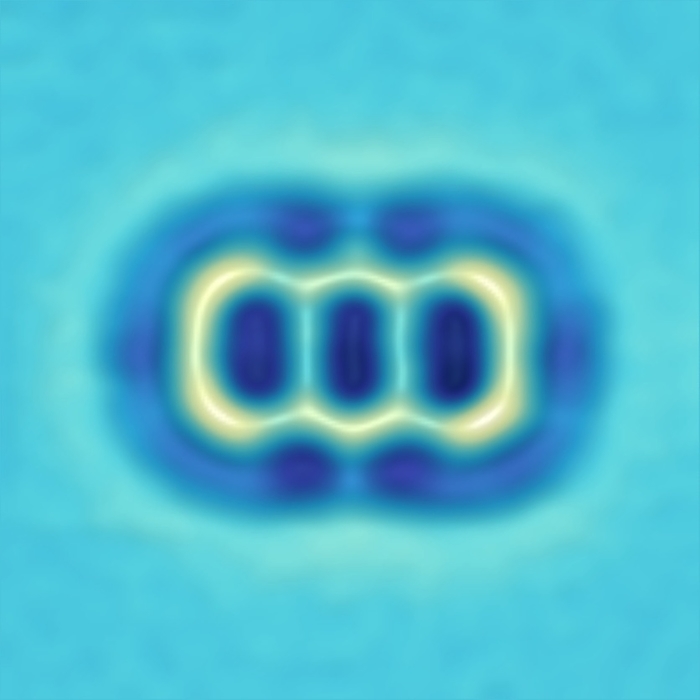
RM
Reversible Bergman cyclization, AFM image
Reversible Bergman cyclization. Atomic force microscopy (AFM) image of the aromatic diradical prepared to allow observation of a reversible Bergman cyclization. Researchers used non-contact AFM to observe this molecular rearrangement, a key step in several organic synthesis and pharmacology reactions. It was first described in 1972 by American chemist Robert George Bergman. The aromatic diradical (prepared from a brominated aromatic) was rearranged into a highly strained ten-membered diyne using atomic manipulation. It was found that the diradical and the diyne exhibit different properties associated with the bond changes. The results were published in 2016 in the journal 'Nature Chemistry', in a collaboration between IBM researchers in Zurich, Switzerland, and CiQUS researchers at the University of Santiago de Compostela, Spain. For the full set of structures observed, see image C032/5431.

More
Top Categories
